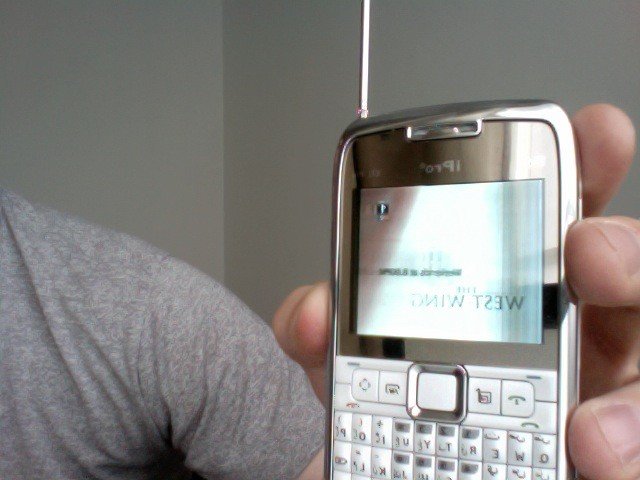November 4, 2010
Colombo, Sri Lanka
I’m a bit of a technology enthusiast– I have a tremendous appreciation for humanity’s intellect, and I’m continually amazed at how it is leveraged. Technology, along with a large pool of savings, is ultimately what drives productivity, increases standard of living, and lifts millions out of poverty.
It’s truly amazing what human beings can achieve when their creativity is unconstrained, and this is fundamentally what gives me great hope for the future. The worse humanity’s problems become, the more innovators will emerge with solutions.
The funny thing is that Asia is becoming more and more the source of the world’s innovation; in what seems like a game of “anything you can do, I can do better,” Asian nations are claiming technological achievements left and right that were once dominated by the west.
Just a few days ago, for example, a Chinese scientific research center in the northern coastal city of Tianjin unveiled the fastest supercomputer in the world. Known as the Tianhe-1A, it is able to calculate instructions at least 40% faster than its nearest competitor in Tennessee.
The reason that the Chinese supercomputer is so much faster isn’t because they just jammed more chips onto the circuit boards… rather, they innovated. Engineers at Tianjin’s National University of Defense Technology developed a new way of connecting powerful minicomputers together which collectively share calculations.
It’s a model that hasn’t been used before and was developed exclusively by Chinese engineers. Though the machine uses processors designed by Intel and Nvidia (US companies), China is already in the works to develop its own chips, fully eliminating reliance on US technology.
This is a central theme among Asia’s technology developers. They start with a basic idea (like supercomputers, military aircraft, or mobile phones), analyze what the foreign companies are doing well, figure out how to make it better, and eliminate any dependency on western suppliers.
 The quad-band, dual-SIM smart phone with TV tuner and 12MP camera
The quad-band, dual-SIM smart phone with TV tuner and 12MP cameraCase in point, the new mobile device that I bought today: the iPro E71 professional, China’s answer to the Nokia E71 smart phone. Aside from having dual SIM card capacity, a built in TV-tuner (ironically I’m able to pick up FOXNews here in Colombo), a longer battery life, and weighing a bit less, the Chinese version costs less than $50.
Similarly, most of my friends in North America and in Europe are dazzled by their new iPhone 4’s. The touch screen phones I’ve seen in Asia, though, are really in a class by themselves. One manufacturer makes a dual SIM handset that operates on both GSM and CDMA bands, and it has built-in scramble technology for greater security…
So what is it about these countries that allows them to innovate so quickly and effectively? In my assessment, it has nothing to do with brains, but rather culture. Their societies do not frown on borrowing and improving existing technology, and in some places, intellectual property rights are downright ignored.
This is clearly a double-edged sword; on one hand, such behavior discourages western companies from coming to the market… many of them want to sit on their patents and collect income based on royalties and brand value.
On the other hand, when engineers and developers know that the competition can copy and innovate, it sparks a feverish race to see who can add the most value for the customer– who can develop the best widget that’s faster/stronger/lighter/cheaper than everyone else’s widget…
At the end of the day, competition is always good for customers, and I think the incredible array of consumer and industrial technology in Asia demonstrates how quickly it can develop when human creativity is unconstrained.
In the west, there are too many large multinationals that are fat and happy living off their brands; they stopped adding value a long time ago and now have teams of lawyers to sue anyone who even thinks of innovating their original idea.
I remember the chuckle I got earlier this summer when I read about Hong Kong’s Wicked Lasers, Ltd. The company manufacturers high intensity laser pointers, and apparently they made one that looks too much like a lightsaber for George Lucas’ taste.
Catching wind of the product, Lucasfilm’s Sith lawyers sent a rather terse ‘cease and desist’ letter to Wicked Lasers, claiming that their product “was intended to resemble the hilts of our lightsaber swords, which are protected by copyright.”
Wicked Lasers posted a rather satirical reply, pointing out the subtle differences between their laser pointer and Lucas’ futuristic fantasy. The case was rather comical, but it does exemplify the lengths to which companies will go in order to prevent others from innovating and adding value.
I think the ultimate lesson is quite simple: anyone who wants to stay competitive should stop being so complacent based on past achievements, roll up their sleeves, and get busy innovating.







